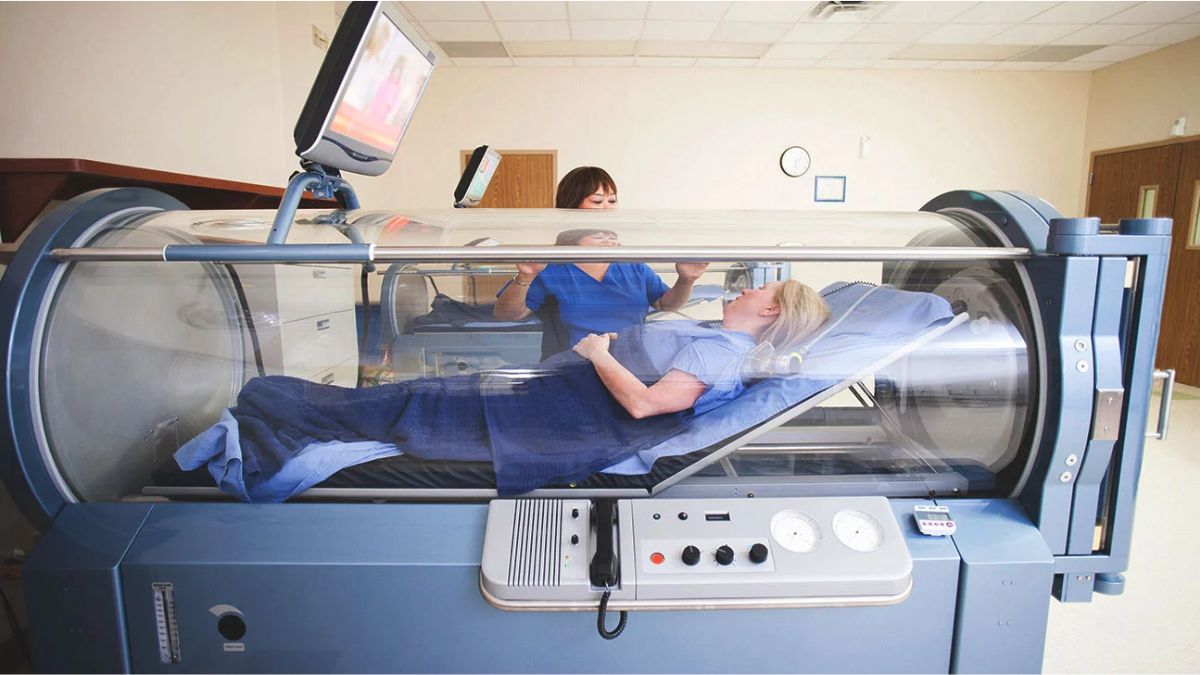Imagine you’re in the gym, pushing your limits with heavy weights above your shoulders. The adrenaline rush feels amazing, but what if that effort comes at a cost? Many athletes and fitness enthusiasts pay little attention to how their training might impact aspects of their health far removed from bulging muscles. can lifting heavy weight above shoulders cause etd?
One such concern is Eustachian Tube Dysfunction (ETD). You might be wondering: can lifting heavy weight above shoulders cause ETD? This blog will explore the surprising connection between intense weightlifting and this often-overlooked condition. Let’s dive into how strenuous exercise may affect your ears and overall well-being, shedding light on symptoms, prevention tips, and alternatives for those who have to tread carefully around ETD. Your workout routine shouldn’t come with hidden risks—let’s unravel them together!
Understanding Eustachian Tube Dysfunction (ETD)
Eustachian Tube Dysfunction (ETD) occurs when the Eustachian tubes, which connect the middle ear to the back of the throat, fail to open properly. This can lead to a variety of discomforting symptoms.
When these tubes don’t function well, pressure imbalances in your ear may cause feelings of fullness or popping. You might experience pain during swallowing or yawning as well.
ETD is often triggered by allergies, sinus infections, or respiratory issues. However, physical activities like weightlifting can also create pressure fluctuations that exacerbate this dysfunction.
Understanding ETD is crucial for anyone involved in strenuous physical activity. Recognizing its signs early on can help individuals manage their workouts without compromising their ear health. This awareness allows you to take necessary precautions and seek solutions if problems arise while lifting weights overhead.
The Link Between Heavy Weightlifting and ETD
Heavy weightlifting, particularly when lifting weights above the shoulders, can create significant pressure in the body. This strain doesn’t just affect your muscles; it may also impact your Eustachian tubes.
When you lift heavy objects overhead, you engage multiple muscle groups. The diaphragm and core tighten to stabilize the torso. This compression might lead to increased pressure in the ear region.
Such pressure changes can disrupt normal Eustachian tube function. If these tubes fail to equalize pressure properly, discomfort and dysfunction arise.
Lifting with improper technique or excessive weight amplifies these risks. It’s essential for lifters to be aware of how their training habits could contribute to potential ETD issues. Balancing strength training while managing ear health is key for anyone who frequently lifts heavy overheads.
Symptoms of ETD Caused by Lifting Heavy Weights Above Shoulders
Eustachian Tube Dysfunction (ETD) can manifest in various ways, particularly for those who lift heavy weights above their shoulders.
One common symptom is ear fullness or pressure. This sensation may feel like your ears are clogged, which can be uncomfortable during workouts.
Another issue people might face is muffled hearing. Sounds may seem distant or muted, making it hard to stay engaged with your surroundings.
Additionally, you could experience popping or clicking sounds in the ears when swallowing or yawning. These noises often result from changes in pressure within the Eustachian tubes.
Some individuals report pain or discomfort deep within the ear, especially after intense lifting sessions. This pain can distract you from focusing on your workout and hinder performance.
If these symptoms arise frequently while weightlifting, it’s essential to pay attention and consider adjusting your routine before they worsen.
Prevention and Precautions for Weightlifters with ETD
Weightlifters with Eustachian Tube Dysfunction (ETD) can take specific steps to minimize discomfort while training. It’s crucial to focus on proper breathing techniques during lifts. Inhale deeply before lifting, and exhale slowly as you complete the movement. This helps regulate pressure in your ears.
Additionally, consider reducing the weight you’re lifting above shoulder level. Opt for lighter weights that allow you to maintain form without straining your body or risking ETD flare-ups.
Incorporating warm-up exercises is essential too. A thorough warm-up prepares your muscles and may help alleviate some of the pressure on your Eustachian tubes.
Stay hydrated before and after workouts. Proper hydration supports overall bodily functions, including ear health.
Pay attention to how you feel during workouts. If any symptoms arise, don’t hesitate to adjust your routine accordingly. Listening to your body is vital for long-term success in weightlifting while managing ETD.
Alternatives to Traditional Weightlifting for Those with ETD
For those facing Eustachian Tube Dysfunction, traditional weightlifting may not be the best option. Fortunately, there are effective alternatives that can help maintain fitness without exacerbating symptoms.
Resistance bands provide a versatile workout. They offer varying levels of resistance and engage multiple muscle groups while keeping strain off your upper body.
Bodyweight exercises are another great choice. Push-ups, squats, and lunges can strengthen muscles without the need for heavy lifting overhead.
Swimming is gentle on the joints and promotes full-body conditioning. The buoyancy of water reduces stress on your ears while providing an excellent cardiovascular workout.
Yoga focuses on flexibility and core strength. It encourages deep breathing techniques that may even alleviate some ETD symptoms over time.
Pilates strengthens with low-impact movements. This method emphasizes control and stability which is beneficial for overall health without straining the ears or neck.
Seeking Medical Advice and Treatment for Severe Cases of ETD
If you suspect that your Eustachian tube dysfunction is severe, seeking medical advice is crucial. An ear, nose, and throat (ENT) specialist can provide a comprehensive evaluation. They will assess not just your symptoms but also any underlying conditions contributing to the problem.
Treatment options vary based on severity. For some, simple measures like nasal decongestants or allergy medications may bring relief. Others might need more invasive procedures, such as balloon dilation of the Eustachian tube.
Don’t hesitate to communicate openly about your weightlifting activities and how they relate to your symptoms. This information can guide tailored recommendations from healthcare providers.
Early intervention often leads to better outcomes. Ignoring persistent ETD symptoms could lead to chronic discomfort or complications down the line. Prioritizing your health ensures that you can continue pursuing your fitness goals safely and effectively.
Conclusion
Understanding the relationship between heavy weightlifting and Eustachian Tube Dysfunction (ETD) is critical for athletes and fitness enthusiasts. The strain placed on your body during intense lifts, especially overhead, can lead to unexpected complications.
Recognizing symptoms early can prevent further discomfort or issues down the line. Weightlifters should remain mindful of their body’s signals.
Exploring alternative exercises may provide relief without sacrificing fitness goals. Adjusting your routine doesn’t mean giving up strength training; it might just mean finding a better fit for your body’s needs.
Seeking professional advice when symptoms arise ensures proper care. Treatments are available that can help manage ETD effectively while allowing you to pursue an active lifestyle without fear.
Keep educating yourself about potential risks in any physical activity you engage in; knowledge empowers better choices and enhances overall well-being.
FAQs
Can lifting heavy weight above shoulders cause ETD?
Yes, there is a possibility that lifting heavy weights above the shoulders can contribute to Eustachian Tube Dysfunction (ETD). The increased intra-abdominal pressure during such lifts may affect the function of the Eustachian tubes.
What are some common symptoms of ETD related to weightlifting?
Symptoms often include ear fullness, discomfort or pain in the ears, hearing difficulties, and even dizziness. If you notice these signs after your workouts, it might be wise to reassess your lifting technique.
Are certain exercises more likely to cause ETD than others?
Exercises like overhead presses or snatch lifts can increase strain on your upper body and neck. This strain can lead to changes in how your Eustachian tubes function.
How can I prevent ETD while weightlifting?
Consider focusing on proper form and avoiding excessive weights that compromise technique. Incorporating breathing techniques for better control during lifts may also help mitigate risks associated with ETD.
What should I do if my symptoms worsen despite making adjustments?
If you’re experiencing persistent or worsening symptoms of ETD, it’s crucial to consult a healthcare professional. They can provide tailored advice and treatment options suited for your situation.
Are there alternative forms of exercise I should consider?
Absolutely! Activities such as swimming or yoga may offer lower-impact alternatives while still providing strength benefits without placing undue stress on the neck and head region.
By being aware of how certain physical activities could impact ear health, individuals who lift weights can make informed decisions about their routines.











